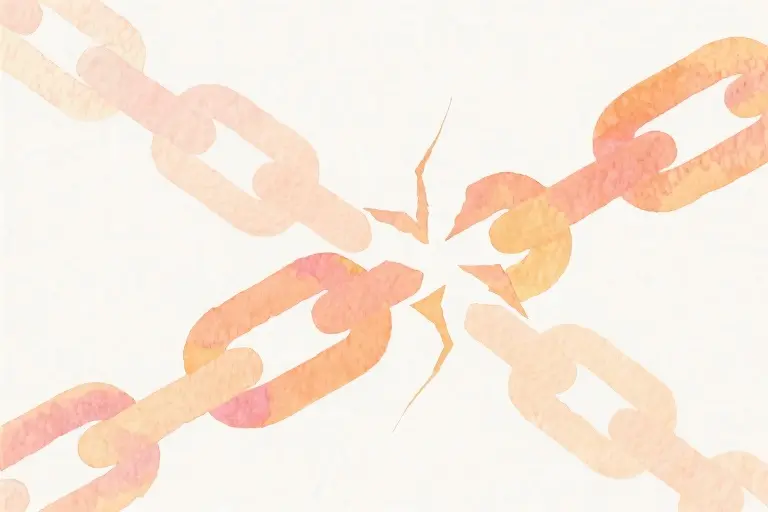There comes a point in your life where you don’t just wake up – you stay awake.
Something shifts in your perception, a subtle but irreversible change in how you experience the world. One morning, you open your eyes and realize you’ve been sleeping through your own existence, participating in conversations without truly listening, moving through social rituals without genuine connection. The veil lifts, and suddenly you’re aware of patterns you never noticed before—the way people’s eyes dart away when they’re uncomfortable, the specific cadence of laughter that doesn’t reach the eyes, the careful dance around topics that truly matter.
This awakening brings with it a new kind of vision. You begin to see the hidden architecture behind social interactions, the unspoken rules governing behavior. The weight of every unsaid word becomes palpable, hanging in the air between people like tangible objects. You notice the slight tightening around the mouth when someone forces a smile, the extra breath they take before offering hollow compliments. The desperation in constant validation-seeking becomes painfully obvious—the endless scrolling through social media, the subtle fishing for compliments, the way people position themselves in rooms to be seen by the right people.
What’s most striking is the emptiness behind these performances. You sense the aching hunger driving most social interactions—the need to be recognized, to feel important, to momentarily escape the quiet discomfort of being alone with oneself. Parties become studies in human behavior rather than opportunities for connection. Work gatherings transform into anthropological observations. Even casual coffee meetings reveal layers of social scripting you never noticed before.
This new awareness comes with a peculiar loneliness. It’s not the loneliness of being physically alone—that space often feels more authentic than crowded rooms. It’s the loneliness of seeing what others don’t, of recognizing the gap between your perception and theirs. You want to point out the patterns, to share what you’re seeing, but most people remain comfortably asleep, moving through the familiar steps of social dances they’ve performed their whole lives.
The realization settles in your bones: once you see the world this way, you can’t unsee it. The genie won’t go back in the bottle. You can’t pretend you don’t notice the subtle power dynamics in meetings, the unspoken tensions in family gatherings, the carefully constructed personas people present to the world. This clarity becomes both gift and burden—a deeper understanding of human nature that simultaneously separates you from the very people you’re trying to understand.
This awakening isn’t dramatic or sudden for most people. It doesn’t arrive with flashing lights or profound revelations. It’s more like developing a new sense—like suddenly being able to see ultraviolet light or hear frequencies others can’t detect. The world doesn’t change; your perception of it does. Colors seem brighter, sounds clearer, intentions more transparent. But this enhanced perception comes at the cost of easy belonging. You can’t comfortably participate in conversations that feel superficial or engage in social rituals that seem meaningless. The price of seeing clearly is the loss of comfortable ignorance.
Yet within this loneliness lies an unexpected freedom. As you become more comfortable with seeing things differently, you also become more authentic in your responses. You stop laughing at jokes that don’t genuinely amuse you. You decline invitations to events that would drain your energy. You become more selective about where you invest your attention and emotional resources. This selectivity isn’t elitism—it’s self-preservation. It’s the natural response of someone who can no longer pretend that empty interactions are fulfilling.
The journey from sleeping to staying awake involves grieving the loss of easy social connections while embracing the depth of more authentic relationships. It means learning to value quality over quantity in human connections, to find comfort in your own company, and to trust that others who see the world similarly will eventually appear. They always do—people operating on similar frequencies, who understand the weight of unsaid words and recognize the difference between performance and authenticity.
This awakening marks the beginning of a different way of moving through the world—one that honors what you now see while making space for others who might still be sleeping. It requires developing new skills: the ability to engage without losing yourself, to connect without compromising your values, to participate in social rituals while maintaining inner authenticity. Most importantly, it demands compassion—for yourself as you navigate this new landscape, and for others who may never develop this particular form of sight.
What begins as loneliness gradually transforms into a different kind of connection—not based on shared activities or superficial interests, but on mutual recognition of deeper truths. These connections feel different—less frequent perhaps, but more substantial. Conversations go beyond weather and sports, touching on fears, hopes, and the strange experience of being human. The silence between words feels comfortable rather than awkward, filled with understanding rather than tension.
Staying awake means accepting that you’ll sometimes feel out of step with the world around you. It means making peace with occasional loneliness as the price of deeper awareness. But it also means experiencing relationships with a new depth, engaging with the world with fresh eyes, and moving through life with greater intention. The sleepwalking is over; the conscious journey has begun.
The Unseen Patterns
You start noticing things that were always there but somehow remained invisible. The way people’s eyes dart away when they’re being dishonest. The subtle shift in posture when someone feels threatened. The carefully constructed masks everyone wears in social situations, each designed to project a specific image while concealing what’s really happening beneath the surface.
This awareness doesn’t arrive as a sudden epiphany but rather as a gradual dawning. One morning you simply realize you’ve been watching a performance your entire life without knowing you were in a theater. The scripts people follow, the roles they assign themselves and others, the predictable arcs of conversations that never actually go anywhere meaningful.
Your emotional perception sharpens to an almost uncomfortable degree. You feel the weight of conversations that never happen—the important things people want to say but can’t bring themselves to voice. You sense the desperation behind someone’s need for constant validation, recognize the emptiness behind those polished social media personas, and detect the subtle vibrations of insecurity that people try to mask with confidence.
This cognitive shift is permanent. Once your awareness expands to recognize these patterns, there’s no returning to ignorance. The curtain has been pulled back, and though part of you might wish for the simplicity of not knowing, that option no longer exists. This new way of seeing changes everything about how you move through the world and interact with others.
The psychological impact is significant. Initially, there’s a sense of isolation that comes with this expanded consciousness. You realize how much of social interaction operates on autopilot, how rarely people actually connect beyond superficial levels. But gradually, this awareness transforms from a burden into a superpower—the ability to perceive truth beneath appearances, to recognize authentic connection when it does occur, and to navigate social situations with newfound clarity and intention.
The Performance Ends: Embracing Your Authentic Self
You used to play the part so well. There was a time when you instinctively knew which lines to deliver, which reactions to expect, which masks to wear for which audiences. You became an expert at measuring the room’s emotional temperature and adjusting your own thermostat accordingly. Laughing just a little too loudly at jokes that never quite landed right. Nodding along to opinions that made your soul cringe. Making yourself smaller so others could feel bigger in your presence.
Someone once told you, “You’re too intense,” and you believed them. So you learned to dilute your thoughts, to soften your edges, to hide the depth that seemed to make people uncomfortable. You became a master of the social dance, always careful not to step on toes, always mindful of the rhythm everyone else was following.
But something shifted. You can’t pinpoint exactly when or how, but the costume began to feel too tight. The script started reading like nonsense. The stage lights that once felt warm now reveal everything you’d rather not see about the performance everyone’s putting on.
Now you find yourself in rooms where the energy feels like static—a low-frequency hum of superficiality that grates against your nerves. You can’t laugh at jokes that carry the stale odor of misogyny or celebrate mediocrity. The sound feels wrong in your throat, like trying to force a square peg through a round hole.
You can’t pretend to enjoy gossip anymore. Each piece of trivial information about who did what with whom feels like empty calories for the soul. You watch people trading these morsels of meaningless information and wonder when we decided this was connection.
Small talk has become a special kind of torture. Conversations that orbit around money, status, or appearances leave you feeling like you’re watching a play where everyone forgot their lines but keeps reciting them anyway. The words hang in the air, empty vessels with nothing inside them.
You can’t “just chill” in environments where authenticity has been replaced by performance. It’s not that you’re high maintenance—you’re just operating on a different frequency. While most people are content with the static of surface-level interaction, you’re tuned into the deeper signals. You hear the unsaid words, feel the hidden tensions, sense the gap between what’s presented and what’s real.
This isn’t about being better than anyone. It’s about being different in a way that makes the old ways of connecting impossible. You’ve outgrown the performance not because you’re superior, but because you’re honest. The costume no longer fits because you’ve grown into your own skin.
People might call you intense or difficult. They might say you’re too sensitive or too serious. What they’re really saying is that your authenticity makes their performance harder to maintain. Your refusal to play along holds up a mirror they’d rather not look into.
This frequency difference isn’t something you chose—it’s something you discovered. Like finding you’ve been speaking the wrong language your whole life and suddenly understanding your native tongue. The static that others accept as normal conversation now sounds like noise to you. The depth you crave isn’t an extra feature; it’s the whole point of communication.
There’s a loneliness in this realization, but also a profound relief. The energy you once spent maintaining the performance can now be channeled into building something real. The relationships that survive this shift will be built on substance rather than convenience. The conversations that matter will have weight and meaning.
You’re not losing your ability to connect—you’re refining it. You’re replacing quantity with quality, surface with depth, performance with presence. The static will always be there, but now you know how to tune it out in favor of the signals that actually mean something.
This isn’t the end of your social life; it’s the beginning of your authentic one. The performance is over. The real conversation is just beginning.
The Price of Consciousness
That moment of awakening comes with an unexpected companion—a profound sense of isolation that settles in your bones. You begin noticing how conversations that once felt engaging now reveal their hollow centers. The laughter around dinner tables carries a different quality now; you hear the uncertainty beneath the volume, the unspoken anxieties masked by exaggerated humor.
This loneliness isn’t about physical solitude. It’s the peculiar experience of being surrounded by people while feeling fundamentally separate. You stand in crowded rooms and recognize the subtle performances unfolding around you—the careful curation of opinions, the strategic revelations, the hidden calculations behind casual remarks. Where others see normal social interaction, you perceive the intricate dance of egos seeking validation.
Those who haven’t experienced this shift in consciousness operate on different frequencies. Their concerns seem strangely distant—conversations about status symbols, superficial achievements, or social positioning feel like listening to a conversation in a foreign language you’ve forgotten how to speak. The gap isn’t about intelligence or value; it’s about fundamental orientation toward reality itself.
This frequency mismatch creates practical challenges in daily life. You might find yourself pausing mid-conversation, realizing the person across from you isn’t actually interested in exchange but in confirmation. You notice how often people talk without saying anything, how frequently social gatherings become performances rather than connections. The energy required to navigate these interactions increases exponentially, leaving you drained after what should be simple encounters.
The double-edged nature of consciousness becomes apparent here. With greater awareness comes both liberation and burden. You can’t return to unconscious compliance once you’ve seen behind the curtain, yet operating with this awareness in a world that largely doesn’t requires constant calibration. You develop a new relationship with silence, learning to appreciate its honesty compared to forced conversation.
This isolation often manifests in subtle ways—the hesitation before sharing an observation you know might be met with blank stares, the careful editing of your thoughts to avoid being labeled “too intense,” the conscious decision to sometimes play along despite seeing the emptiness in the performance. These small moments accumulate into a persistent awareness of being different in ways that are invisible to others but profoundly felt by you.
Yet within this loneliness resides an important truth: the discomfort signals growth, not deficiency. The ache of separation emerges because you’ve outgrown certain patterns of connection, not because you’ve failed at them. This distinction matters—it transforms loneliness from a personal failing into evidence of evolution.
The frequency gap that causes this isolation also serves as filtering mechanism. It becomes increasingly difficult to tolerate relationships based on pretense or convenience, creating space for more authentic connections. The very sensitivity that makes you aware of superficiality also makes you appreciate genuine interaction more deeply when it occurs.
Living with expanded consciousness means developing new strategies for navigating social landscapes. You learn to identify subtle cues indicating shared depth—the momentary pause before a response, the willingness to sit with uncomfortable questions, the ability to discuss ideas without making them personal battlegrounds. These become your new social currency, replacing the conventional markers of connection.
This stage of awakening requires developing what might be called conscious solitude—the ability to be alone without being lonely, to value quality of connection over quantity, to find richness in your own company rather than seeking constant external validation. It’s not about rejecting community but about redefining what community means on your terms.
The price of consciousness includes recognizing that some relationships will naturally fade as you change, while others might require renegotiation of terms. Not everyone will understand or appreciate your evolving perspective, and learning to navigate these shifts with grace becomes part of the journey.
What initially feels like loss often reveals itself as curation. The loneliness serves as emotional space clearing, making room for connections that operate on similar frequencies. The very awareness that causes discomfort also provides the discernment needed to build more meaningful relationships.
This phase of isolation often precedes significant breakthroughs in personal development. The space created by stepping back from conventional social patterns allows for deeper self-understanding and more intentional relationship building. The loneliness becomes transitional rather than permanent—a necessary reorganization of your social ecosystem.
Understanding the transactional nature of many social interactions doesn’t have to lead to cynicism. Instead, it can inspire more conscious engagement—choosing when to participate in social rituals with awareness rather than automatic compliance, bringing intentionality to your interactions rather than operating on autopilot.
The frequency difference that causes isolation also provides protection. You become less likely to invest energy in relationships that drain rather than nourish, more skilled at recognizing authentic connection amidst social noise. What begins as loneliness evolves into discernment.
This expanded awareness brings responsibility—the choice to sometimes bridge frequency gaps through patience and explanation, while also knowing when to conserve energy for connections that require less translation. Finding this balance becomes an ongoing practice rather than a fixed destination.
The loneliness of consciousness eventually reveals its purpose: it’s the necessary distance required to see patterns clearly, the emotional space needed to develop deeper connections, the temporary isolation that makes authentic community possible. The price paid upfront yields compounding returns in relationship quality and personal integrity.
This stage of awakening asks you to develop comfort with being misunderstood temporarily while staying open to being understood deeply by the right people. It requires trusting that the loneliness is transitional—the space between who you were and who you’re becoming, between old connections and new ones yet to form.
The frequency gap that feels like separation eventually becomes your guidance system—leading you toward people and experiences that resonate more deeply, helping you avoid relationships that would require compromising your expanding awareness. The very sensitivity that makes you feel isolated becomes your compass toward more meaningful connection.
The Evolutionary Path: From Isolation to Connection
When the static of conventional interaction becomes unbearable, a new set of skills emerges not as choice but as necessity. This transition from loneliness to selective connection represents the most practical phase of consciousness evolution—where theoretical awareness meets daily application.
Energy Protection as Foundational Practice
The first rule of maintaining high frequency: not everything deserves your energy. Protection begins with recognizing that attention is currency and emotional labor has tangible costs. You develop what might appear to be eccentric habits—leaving parties early without elaborate excuses, setting phones to do-not-disturb during creative hours, refusing to engage in debates that drain more than they illuminate.
These aren’t antisocial behaviors but sophisticated filtering mechanisms. The conscious person learns to distinguish between solitude (chosen alone time that replenishes) and loneliness (unwanted isolation that depletes). Energy protection creates conditions where the former flourishes while minimizing the latter.
Practical implementation looks like developing an internal meter that gauges resonance. Some conversations feel like tuning forks vibrating at your frequency—they leave you energized even when discussing difficult topics. Others, however pleasant superficially, create the sensation of emotional drainage. The protected person learns to honor these physical signals rather than override them with social obligation.
The Art of Social Filtering
Filtering becomes second nature—not as judgment but as recognition of compatibility. You notice how certain people consistently:
- Speak in substance rather than spectacle
- Ask questions that demonstrate genuine curiosity
- Comfortably sit in silence without needing to fill it
- Respect boundaries without taking offense
- Celebrate your depth rather than asking you to diminish it
These become your screening criteria, replacing conventional metrics like status or popularity. The filtering process happens organically through observation rather than interrogation. You notice who remembers what matters to you, who asks follow-up questions months later, who responds to vulnerability with matching authenticity.
This selective approach might reduce your social circle numerically but increases its quality exponentially. The mathematics of connection shifts from addition to multiplication—where each authentic relationship compounds the value of others.
Recognizing Your Tribe
Conscious people develop what might be called frequency recognition—the ability to identify similar consciousness through subtle cues. These rarely appear in obvious declarations but in the spaces between words:
- The way someone’s eyes light up when discussing ideas rather than people
- The questions they ask about your inner world rather than your external achievements
- Their comfort with paradox and uncertainty
- How they speak about others who aren’t present
- The books they’ve dog-eared, the art that moves them, the silence they keep
These markers become more reliable indicators than shared interests or backgrounds. You learn to spot the telltale signs of depth—the slight hesitation before giving a conventional answer, the self-correction when slipping into automatic response, the willingness to abandon a position when presented with new evidence.
Sometimes recognition happens instantly—a conversation that feels like continuing something begun long ago. More often, it emerges gradually through consistent patterns of interaction. The conscious person develops patience for this unfolding, understanding that depth reveals itself layer by layer.
Building Depth Connections
Once recognition occurs, building connection requires intentional practices that differ markedly from conventional socializing:
Shared vulnerability replaces superficial bonding. This doesn’t mean indiscriminate self-disclosure but progressive revelation matched by the other’s capacity to receive it. The conscious person learns to gauge the appropriate level of depth for each stage of connection.
Presence becomes the primary gift. Instead of planning responses while others speak, you practice deep listening—not just to words but to the emotions and meanings beneath them. This quality of attention becomes rare currency in a distracted world.
Truth-speaking develops as both skill and art. You learn to express difficult truths with compassion, to disagree without disconnecting, to hold boundaries with kindness. This replaces either aggressive confrontation or passive avoidance that characterizes less conscious communication.
These connections often develop outside traditional social contexts—during walks rather than over meals, through written exchange rather than only verbal conversation, in shared creative projects rather than purely social gatherings. The form follows the function of depth.
The Continuous Growth Framework
Conscious evolution isn’t a destination but a direction. Those who’ve awakened to deeper awareness recognize that maintenance requires ongoing practice:
Regular self-assessment prevents stagnation. This might include quarterly reflections on:
- Which relationships energize versus deplete
- How much time spent in authentic versus performative modes
- Whether current social patterns align with evolving values
- What boundaries need strengthening or relaxing
Skill development continues indefinitely. Even advanced practitioners work on:
- Communicating complex internal experiences with increasing precision
- Recognizing blind spots in their perception of others
- Balancing openness with protection more gracefully
- Navigating the unique challenges of deep relationships
Community building becomes intentional. As you identify fellow travelers, you might create containers for connection—reading groups, discussion circles, retreats, or collaborative projects that provide regular connection points beyond chance encounters.
This ongoing development transforms loneliness from a permanent state to a temporary signal—an indication that your current social ecosystem needs recalibration. The sensation becomes less about something being wrong with you and more about something being off in your connections.
The evolutionary path ultimately leads to a paradox: the more comfortable you become with solitude, the more capable you become of deep connection. The security that comes from self-validation creates the foundation for relationships based on choice rather than need. What begins as loneliness gradually transforms into selective connection—fewer relationships, but ones where you can finally stop performing and simply be.
This transformation doesn’t happen overnight or without effort. But each step away from performative socializing and toward authentic connection creates a positive feedback loop—the more you experience real connection, the less tolerable superficial interaction becomes. The very sensitivity that initially created loneliness eventually becomes your guide to finding where you truly belong.
The Unseen Advantage
What if the very loneliness you’ve been resisting is actually the clearest sign you’re heading in the right direction? That ache for something more genuine isn’t a malfunction—it’s your internal compass finally working properly after years of static interference.
The price of consciousness isn’t a penalty; it’s an investment. Every moment of discomfort, every instance of choosing authenticity over approval, builds a foundation that can’t be shaken by superficial validation. The space that opens up when you stop performing for others doesn’t remain empty for long—it fills with a quality of connection you previously only glimpsed in fleeting moments.
This isn’t about becoming special or elite. It’s about becoming honest. The frequency shift you’re experiencing isn’t a hierarchy with you at the top; it’s a recalibration toward truth. Some will resonate with that truth, some won’t. The miracle is that you’re learning to care less about the numbers and more about the quality of resonance.
Those forced smiles you can’t unsee? They become doorways to compassion rather than judgment. That desperation for validation you sense in others? It transforms from something irritating to something heartbreakingly human. Your awareness doesn’t have to create distance—it can create deeper understanding while maintaining healthier boundaries.
The path forward isn’t about finding people who’ve completed their awakening, but about recognizing those who are willing to awaken together. They’re not necessarily in spiritual circles or personal development workshops—they’re in ordinary places, doing ordinary things, but with an extraordinary presence that feels like coming home.
Your ability to sit with discomfort, to choose integrity over convenience, to value depth over distraction—these aren’t burdens. They’re superpowers in a world that often prefers sleep to awareness. The very sensitivity that makes social situations challenging also makes sunsets more vivid, music more penetrating, and human connection more transformative when it does occur.
What comes after awakening isn’t a final destination but a beginning—the start of creating a life that doesn’t require you to shut down your perception to survive it. The loneliness diminishes not when you find your people, but when you become someone who no longer betrays yourself to avoid being alone.
This is where your real work begins—not in escaping the feelings that awakening brings, but in building a life spacious enough to contain them. A life where your increasing sensitivity becomes not a problem to manage but an instrument to navigate with.
The static you perceive in others? It’s just unmet potential. Your own high frequency? It’s not a barrier but an invitation—a beacon for those who are ready to trade performance for presence.
What happens next is both simpler and more profound than you might expect: you begin living as if the truth you’ve discovered matters more than the approval you might lose. And in that commitment, something shifts—not in the world around you, but in your relationship to that world.
This isn’t the end of something. It’s the awkward, beautiful, messy beginning of everything else.





